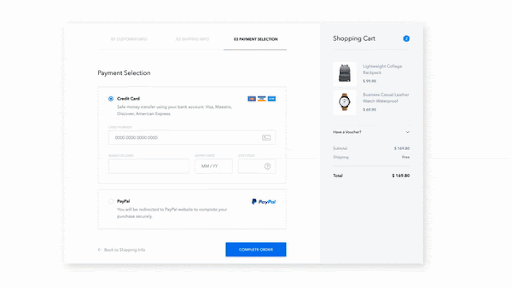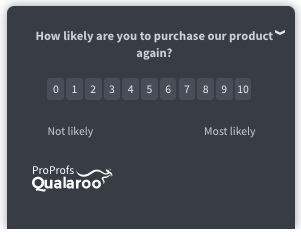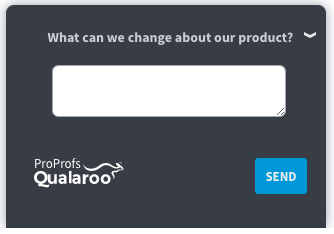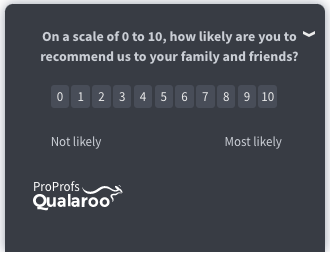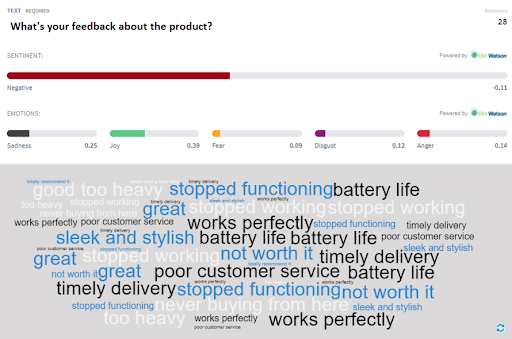Recommendations hold a lot of importance in our society. They are at the heart of providing value to your customers.
To give you a perspective, 91% of the people either occasionally or regularly read online reviews, and about 84% of them trust online reviews as much as any personal recommendation. You can also run the NPS program to gather valuable feedback from your customers.
Now, let that sink in.
Taking your brand into consideration, even if you do everything right and aim for perfection at every step and touchpoint, one bad customer experience could substantially damage your business.
Furthermore, customers are three times more likely to talk about a bad experience than a good one. While free-form reviews can be qualitative, it becomes difficult to measure customer feedback and put it to good use this way.
That’s where Net Promoter Score (NPS) surveys come in. With NPS surveys, you can understand how customers feel about your brand.
So, do you want to create a killer NPS program for your business? Dive into this detailed guide to learn the steps to build it and how it can benefit you.
Are you tired of watching your customers move on to your competitors even before you've had the chance to ask them what went wrong and how you can help?
That's where conducting on-site and in-app NPS (Net Promoter Score) surveys help. It is one of the most popular and indicative KPIs to distinguish unhappy customers from happy ones and improve their customer experience.
An in-depth understanding of this indicator makes it possible to qualitatively analyze the opinion of the customers about your products/services.
So, what are we waiting for? Let's understand this metric and how you can leverage NPS to turn unhappy customers into brand ambassadors.
The Net Promoter Score (NPS) is an excellent metric to determine your customers' feelings about your company's offering: whether you market goods, services, or digital products.
It's because you stand to gain more than just a benchmark statistic when you look closely at your Net Promoter Score. Your customer's reasoning behind their score contributes to your overall NPS and can help explain where you are succeeding and where you should improve.
NPS is a simple metric that’s measured by asking the question: “How likely are you to recommend us on a scale from 0 to 10?”
The greatest advantage of NPS is its simplicity. It tends not to ruffle customers' feathers no matter at which touchpoint in the customer journey they are asked — the start, middle, or end.
💡 FUN FACT!
Did you know that NPS® is a registered trademark of Bain & Company, developed in 2003 by Fred Reichheld? According to him:
“Net Promoter score is where mission meets mathematics. A mission without a measurement, without an accurate gauge of success or failure, is just so much hot air. Only by systematically measuring its effect on people and their relationships can an organization gauge whether it is really achieving its mission and enriching lives. That’s NPS’s reason for being.”
As the name suggests, the employee net promoter score is a metric that tracks employee satisfaction and how they feel toward your company and the work environment.
Much like NPS for customers, eNPS helps companies gain insights into the employee experience and find out if they are loyal to the company.
Employee Net Promoter Score metric can be measured with the question:
"On a scale of 0-10, how likely are you to recommend our company and workplace to others?"
It's a great way to assess the quality of your work environment and whether some changes are required to reduce or manage employee churn.
You can track the metric by deploying employee net promoter score surveys at various touchpoints in the employee journey, such as onboarding, training, and appraisals.
Each response you gather is an opportunity to connect with your customers and ideally push them up the scale towards being a promoter.
While reaching out to each customer who gives you feedback may be time-consuming, it's arguably the most critical and possibly the most rewarding aspect of NPS measurement.
Conveying to a customer that you hear them and use their feedback to improve their experience is one of the quickest ways to win them over. Furthermore, following up with your customers helps them go into further depth about their opinions and the change they would like to see.
Detractors: For every detractor's response received on the Net Promoter Score range, you can have a response automatically routed to your customer success Slack channel for immediate response. Check out this article on how to set it up.
Passives: Passives don't dislike you, but they're also not your biggest fans. Usually, it has to do with a lack of service or features. You can automatically funnel data to your product team for feature discovery.
Promoters: This is a perfect opportunity to create referrals.
Automatically send this data to your sales or marketing team to reach out for case studies, enter into a referral program, or additional reviews on 3rd party sites.

By strategizing as per the groups of Promoters, Passives, and Detractors, you're saving effort, time, and resources and involving the entire organization to be a part of your NPS program. Having participation from every department increases your chances of expanding your customer base.
While there are many metrics to measure the success of your business and products/services, NPS surveys are something that companies deploy all over the world for the reasons mentioned below:
Inexpensive and Simple
It's just one simple question that can reveal how loyal a customer is to your company. Without needing elaborate questionnaires, this simple and easy-to-calculate metric can reveal how strongly positive, negative, or indifferent people are about your business.
Applicable to Any Business
No matter what business you have, NPS can be used to gauge the sentiments of your customers.
NPS surveys can be deployed for any department in your organization and can be easily understood by anyone. Not just customers, NPS can also help measure how loyal employees are to your company which goes a long way in making your business better.
Best for Tracking Change Over Time
Transactional NPS lets you measure loyalty right after a purchase or support request. At the same time, relational feedback from an NPS survey sent multiple times over time can help you understand how strong of a relationship a customer shares with your company.
Depending on the business, these can be sent to track change on a quarterly, annual, or more frequent basis.
Lets You Check Repeat Business Opportunities
Knowing that many promoters out there are ready to recommend you to others can give you a good idea of people to target for repeat business. It can help you plan business growth and cash flow and assess your brand's health and overall customer satisfaction.
Related Read: 8 Ways Market Research Can Help You Grow Your Business
Lets You Benchmark on a Global, Industry-Wide Scale
This metric lets you design competitive strategies on a broader level by letting you know how you fare against competitors from your industry in your region and worldwide.
The same isn't possible with CSAT surveys that measure smaller and more specific interactions.
Measure Customer Loyalty
Customer loyalty is one of the commanding factors when it comes to profits and the business's long-term growth. Almost 65% of the business that companies generate comes from repeat customers, and loyal customers are the ones that come back, so ignoring loyalty is not even an option.
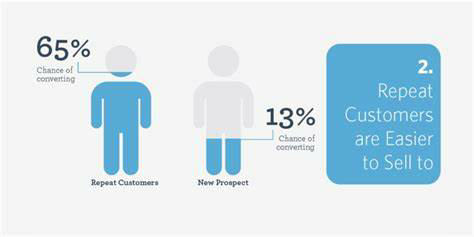
But how do you make customers loyal to your brand in the first place?
For that, you first need to understand how your customers feel about your products, services, and business.
This can be done by asking NPS survey questions specific to your products and services to get an accurate picture of loyalty.
You can also deploy an online NPS survey tool like Qualaroo for the same and use built-in NPS survey templates for hassle-free feedback collection.
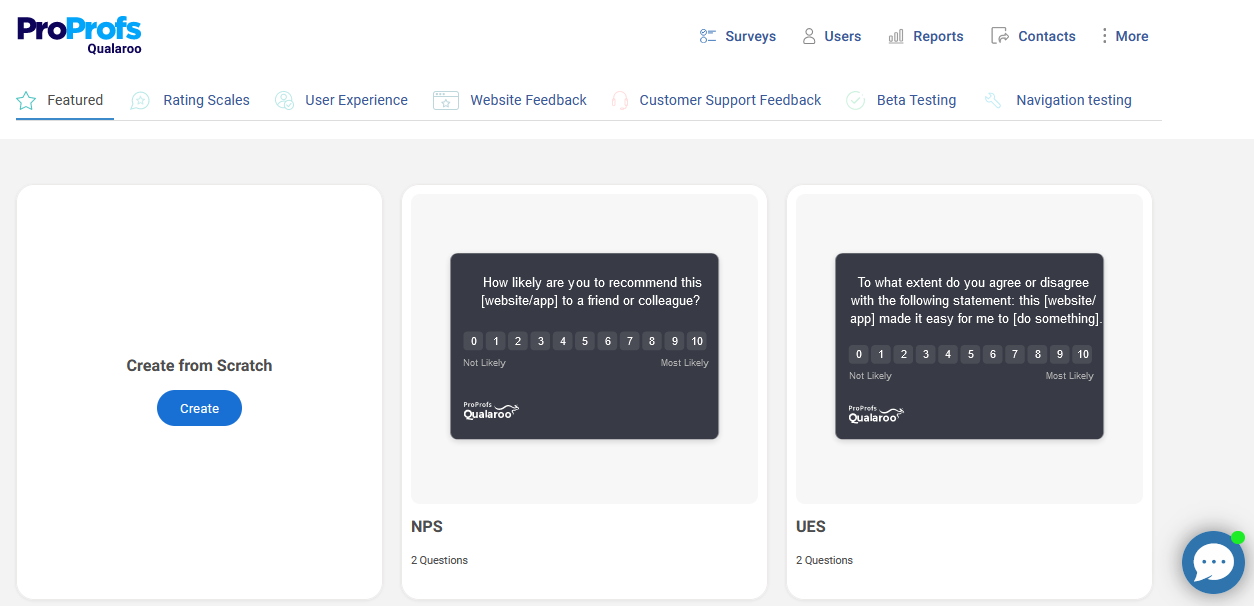
Once done, you’ll have the scores with you.
An NPS score above 20 is considered 'Favorable,' a score above 50 is considered 'Very good,' and above 80 is considered 'Excellent.'
Any significant drops in your NPS score will indicate problems with your products or services, which you can adjust accordingly to get your scores back up.
The trick here is to conduct NPS surveys regularly to keep track of your customers' sentiments and overall loyalty.
Gauge Customer Satisfaction
NPS surveys can help you instantly gauge customer satisfaction. The most effective way of doing this is by using transactional NPS surveys to get real-time satisfaction scores right after an event.
There are various touchpoints in a customer journey, and you can capture customer satisfaction data at any of these touchpoints for more authentic data collection. Some touchpoints to gather customer satisfaction data are:
-
Post-order survey: These surveys can be sent to customers via email or SMS right after they’ve placed an order or made a transaction to understand how satisfied they are with the overall process

- Post interaction: These surveys can be sent out to customers who have raised a ticket for assistance, and they can help you understand how satisfied your customers are with your support services.
- Post-delivery survey: You can send post-delivery surveys to your customers via email, SMS, or QR codes printed in the invoice to understand how satisfied your customers are with your delivery services.
Also, if you are using an online feedback tool, you can use different targeting modes that will help you display your surveys only to the people they are meant for.
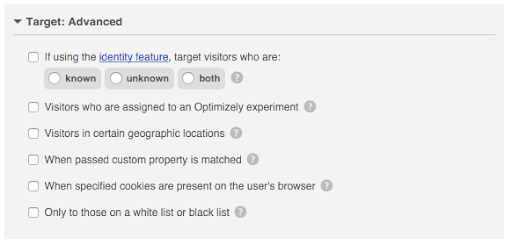
These targeting modes also have several triggering options that trigger surveys after specified actions to ensure no data collection opportunity is missed.
Improve the Quality of Products and Services
It goes without saying that if you want to attract more people, you need to make your products and services more customer-oriented.
NPS surveys are great when it comes to finding out areas for improvement.
You can start by building a two-part questionnaire for this. Here are sample NPS questions for both parts:
-
NPS question-'How likely are you to purchase our product again?' (To get the customer's standpoint).

-
Follow-up question-'What can we change about our product?' (To get the context and reason behind NPS scores).

Your NPS survey follow-up questions should always be based on the type of audience you are asking them to. This includes:
-
Promoters: Asking them reasons behind the score to identify strong areas of your product, which you can highlight even more to attract more people.
-
Passives: By asking for reasons from your passives will highlight areas in your product that need a little more improvement so that your customers are never reluctant to take actions.
-
Detractors: Your detractors will provide you with constructive criticism about your product and highlight areas that need major improvements for your product to be a success.
You can easily deploy 12+ question types to create diverse questionnaires and get contextual feedback using appropriate follow-up questions.
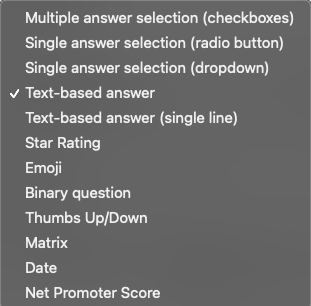
Boost Customer Relationships
NPS surveys are a popular way of conducting relationship surveys to understand the general sentiments of customers about your company and brand as a whole.
Identifying relationships through NPS surveys will help you know how your customers perceive your business in the long run.
Also, gauging relationships through NPS survey questions is super easy. All you need to do is ask:
-
On a scale of 0 to 10, how likely are you to recommend us to your family and friends?'

Once you know how your customers feel about being related to your brand in the long run, you can make necessary efforts to reach out to more people, engage with them and extend relationships for long-term business growth.
Every coin has two sides, and so does NPS. So, let's briefly examine the NPS advantages and disadvantages.
Close the Feedback Loop
One of the biggest benefits of net promoter score surveys is that it opens up opportunities for you to close the feedback loop.
Why is it so important, you ask?
Well, mainly because 88% of consumers share their negative experiences, out of which 59% tell their friends and family.
And you do not want the fire to spread.

This is why you can easily conduct NPS surveys to identify the detractors and then work towards solving their queries and improving their experience. Also, if you do that, there is a solid chance that your detractors will be willing to do business with you again.
There are two main types of problems that you would need to address to close the feedback loop:
-
Recurring issues:These are some general issues faced by many customers, and these problems arise mainly due to some fundamental design flaws. For instance: Less legroom in a car's rear seats due to the small chassis design.
Identifying these problems early on is always recommended so you can release a common fix that will solve everybody's problems. Also, using an online feedback tool with a built-in Sentiment Analysis Engine can help you identify common words and phrases that customers use to define their problems.

-
Unique issues: These are the unique issues faced by the customers which arise from their personal usage of the products. Here, tools like live chat are some of the best ways to connect with each customer, understand their problems, and assist them in real time.
By following up with your detractors, you can easily pinpoint issues with your products and also close the feedback loop for better customer experience and retention in the long run.
Now that you have all the information about NPS survey questions and their uses, let's finally look at some of the best survey questions for NPS that you can ask.
Simple and Respondent-Friendly
NPS surveys usually contain one question and sometimes may have a follow-up question based on the scores respondents give. One of the NPS advantages is that the surveys are so compact, they win the points of respondent-friendliness.
As opposed to long-winded surveys, respondents are more willing to take NPS surveys and complete them. That's why NPS surveys enjoy a high response and completion rate.
As for the company, NPS is easy to track and calculate. Even the feedback from NPS surveys is very straightforward, making it possible to analyze data in real time.
Discovers Brand Advocates
Since NPS gauges how likely your customers are to recommend your brand, products, and services to others, it distinguishes your brand's advocates in the process.
You can see your loyal customers rooting for your offerings and who you need to save from churning away.
It gives you an idea of how much you can rely on word-of-mouth marketing and plan your marketing strategy accordingly.
Real-Time Insights
Since the feedback data you get from the NPS surveys is mostly quantitative (if there are no follow-up questions to collect contextual feedback), the data analysis is fairly simple and quick.
A reliable NPS tool will show insights from the survey in real time on its intuitive dashboard and automatically calculate the NPS score.
It enables you to take active measures, confront your detractors, and try to improve their experience to convert them into promoters (or neutrals, at the least).
Improves Customer Journey
NPS surveys are compact, so you can deploy them at various touchpoints in the customer journey and understand their experience and satisfaction level at different stages.
You can then use the data to compare it and assess where you need to improve to offer a streamlined experience.
It's Not an All-in-One Solution
One of the drawbacks of NPS is that although the NPS surveys give you a pretty good idea of your loyal customers, it doesn't paint the whole picture.
NPS is very limited in collecting feedback data on its own. You'll have to leverage branching logic to add follow-up questions if you need qualitative insights, such as in-context feedback.
And if you're looking for specific feedback, you'll have to try other customer satisfaction metrics.
Doesn't Expand Customer Base
NPS is an incredible metric to enhance your customers' experience, but it doesn't contribute much to expanding your customer base. In a sense, it is inwards looking and not outward-looking.
😃 FUN INSIGHT!
Oldsmobile, an automobile company, went bankrupt in 2004, known for its high customer loyalty. So, what went wrong when their NPS showed the green light?
The company focused too much on customer loyalty and became almost oblivious to its receding customer base.
Do you want free survey software?
Qualaroo is the world’s most versatile survey tool
More Resources

The Beginner’s Guide to Conversion Rate Optimization (CRO) is an in-depth tutorial designed to help you convert more passive website visitors into active users that engage with your content or purchase your products.

With a 10-30% or higher response rate, every product owner should be asking their customers these questions.

Whether you are developing a new product or have been selling the same one for years, you need user feedback.
